Between 2008 and 2009 Smart Shelter Foundation has tested a huge amount of soil samples in the Kaski District of Nepal. The aim was to determine if the mountain soils in the region are suitable for making stabilized earth blocks.
An abundance of soil testing manuals can be found on the internet. Out of all that information Smart Shelter Foundation distilled one manual that is complete and correct. The focus is on low-tech and on-site testing of your soil samples with some simple tools and tricks, but without the use of sophisticated lab technology. The manual includes the following chapters:
Chapter 1. Soil
Chapter 2. Lab Testing
Chapter 3. Field Testing
Chapter 4. Soil Stabilization
Chapter 6. Bibliography
Earth construction has many advantages and these days we see a huge revival of these techniques. If you want to build with earth, be it with cob, adobe, rammed earth or stabilized blocks, you need to understand the basics of soil composition. To determine the technique you can use with a certain type of soil, you must take samples from your site, and test these.
Example. In India we built a school with cement stabilized earth blocks (CSEB), and for that we needed to have a ratio of around 65 -75% coarse particles versus 25-35% of fine particles. Most ideally for CSEB you must try to find the following composition:
- 15% gravel (coarse particles)
- 50% sand (coarse particles)
- 15% silt (fines)
- 20% clay (fines)
During our soil tests in India we found out that our samples contained around 50% gravel and sand. Therefore for each unit of soil, we had to mix in one unit of sand or quarry dust. This resulted in 1×50% + 1×100% = 1 mix with 75% coarse particles.
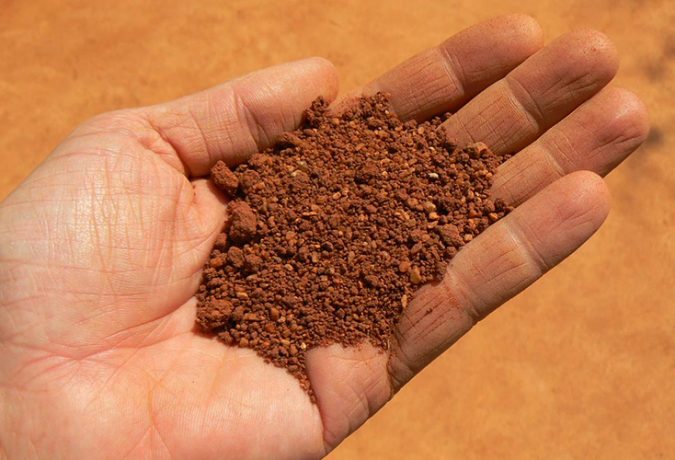 Sample of sandy soil. But we can only know this after testing.
Sample of sandy soil. But we can only know this after testing.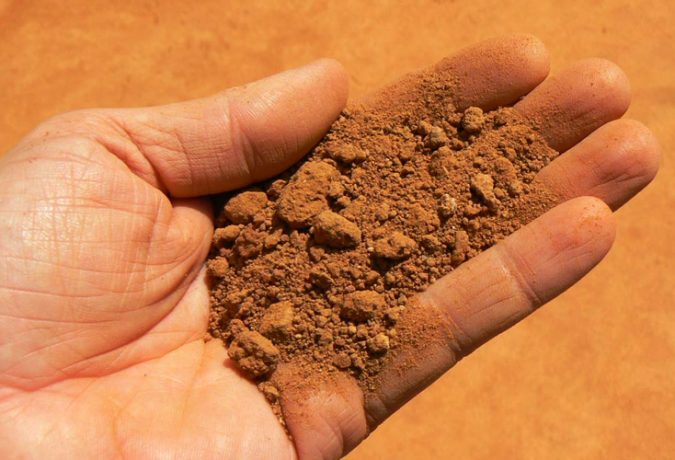 Sample of soil with lots of silt.
Sample of soil with lots of silt.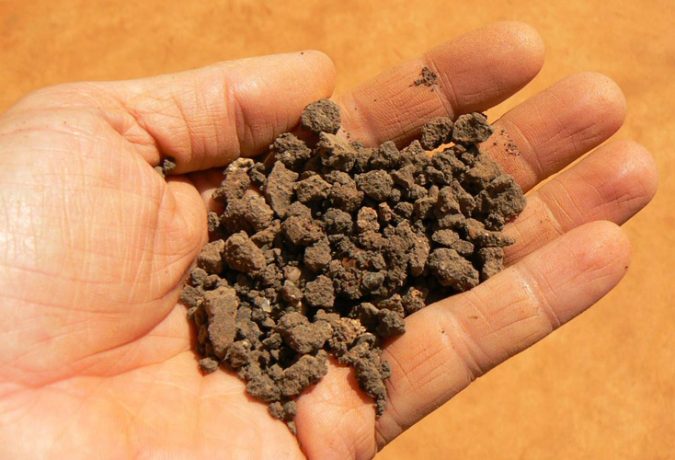 Sample of soil with lots of clay. A first indication is the presence of all the lumps.
Sample of soil with lots of clay. A first indication is the presence of all the lumps.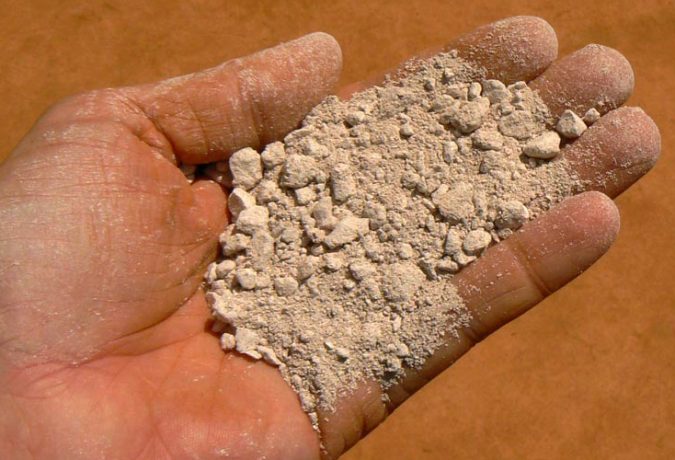 Sample of pure clay.
Sample of pure clay. Some simple tricks to identify the ingredients of your soil sample.
Some simple tricks to identify the ingredients of your soil sample.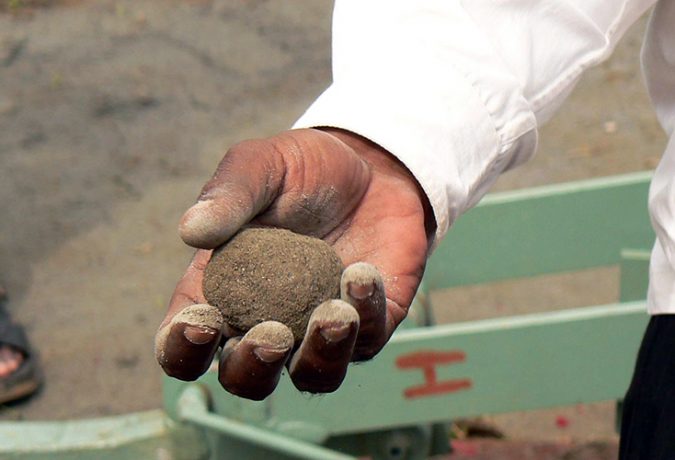 Ball dropping test, to determine the cohesion of the mixture.
Ball dropping test, to determine the cohesion of the mixture.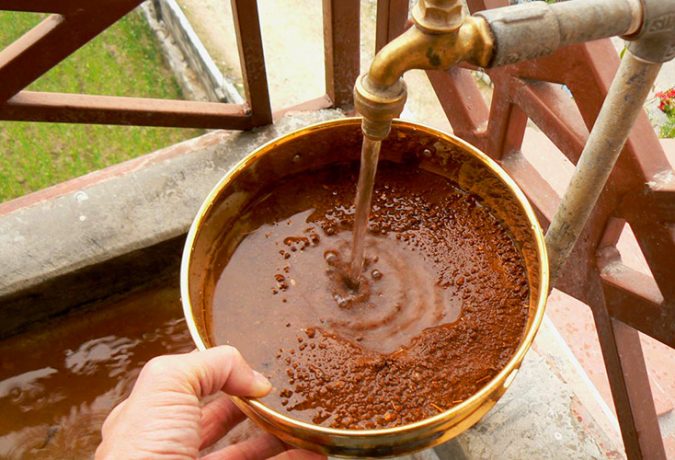 Sieving test, to determine the percentage of coarse particles in the soil.
Sieving test, to determine the percentage of coarse particles in the soil.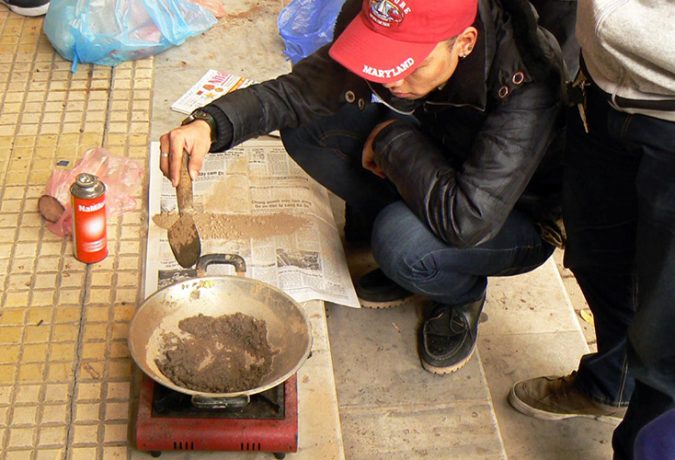 Cooking the washed sample dry to weigh the leftover content.
Cooking the washed sample dry to weigh the leftover content.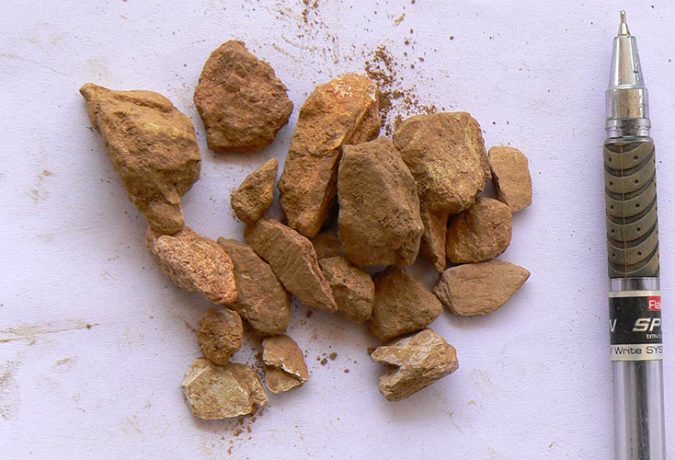 This looks like gravel and small stones…
This looks like gravel and small stones…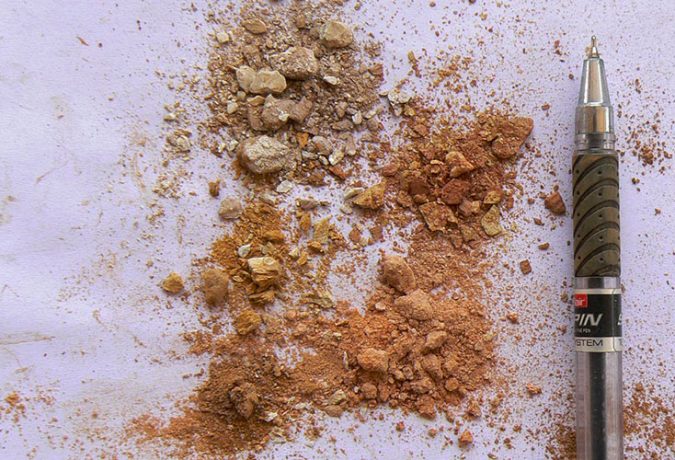 ...but further testing revealed these are soft stones, in the very slow process of degrading to soil.
...but further testing revealed these are soft stones, in the very slow process of degrading to soil.

